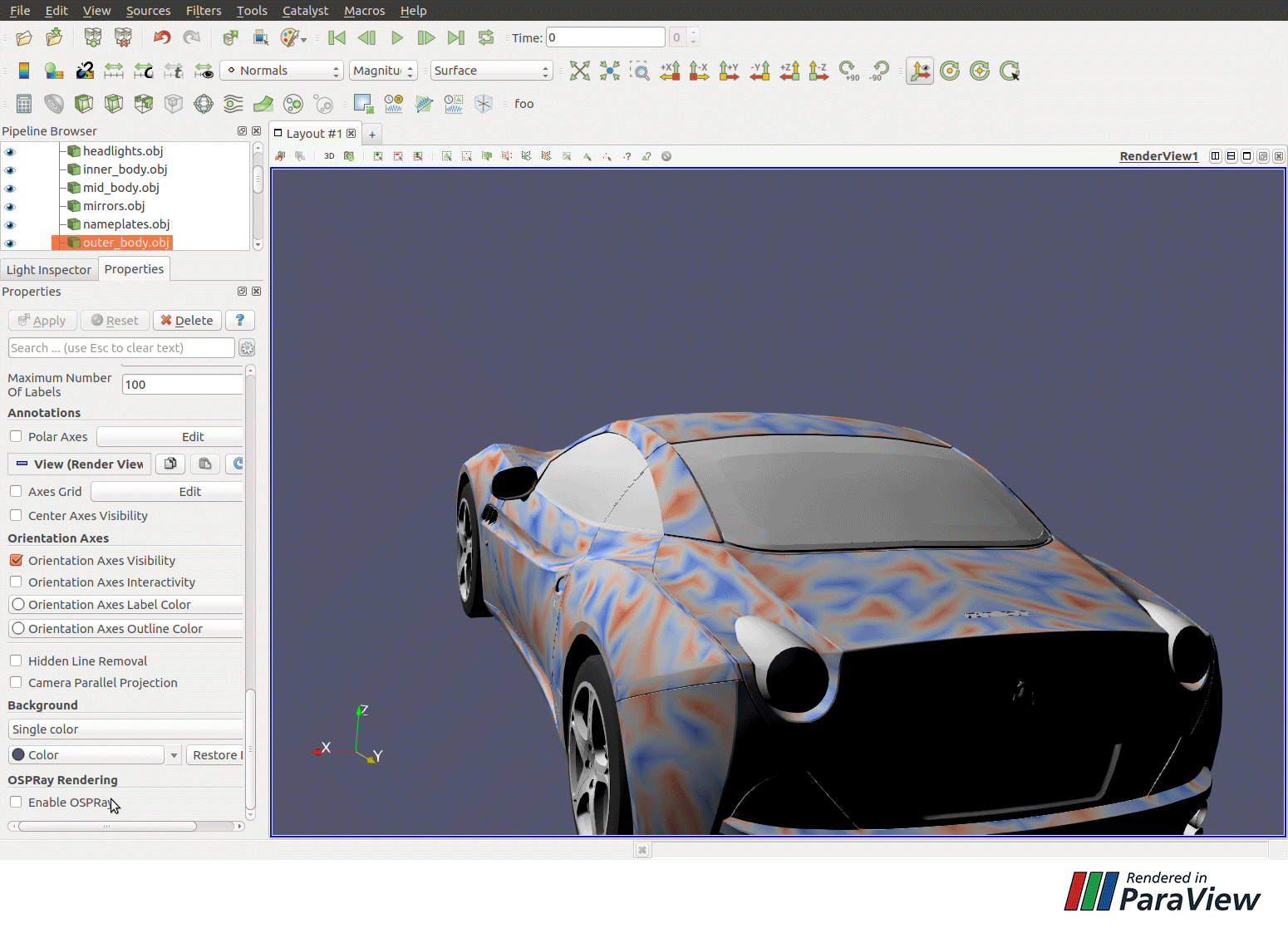Kitware Talks SC17 and Releases for VTK, ParaView and CMake

Developments supersize results on software platforms.
Kitware, a software research, development and consulting company, connected with other members of the high-performance computing (HPC) community to develop new features for three open source software platforms: the Visualization Toolkit (VTK), ParaView and CMake. Kitware made a preview release of ParaView earlier this month, and it plans to release VTK 8.1 and CMake 3.10 by the end of the year. Kitware has designated space at its booth (647) at The International Conference for High Performance Computing, Networking, Storage and Analysis (SC17) to show off the platforms and other offerings for HPC.
Prior to last year’s SC conference, Kitware began the release cycle for VTK 7.1. The release introduced a new module for rendering data in virtual reality, which uses the OpenVR standard and includes support for HTC Vive. With the upcoming release of VTK 8.1, users will be able to interact with three-dimensional widgets, such as menus and cropping planes, in virtual reality.
“The consumer virtual reality support in VTK is opening up new ways of exploring data at an unprecedentedly low cost,” said Ken Martin, a distinguished engineer at Kitware and a co-founder of the company. “This year’s conference is special, as it will be the first time that attendees get to experience VTK with HTC Vive at our booth.”
In version 8.1, VTK will contain new features for ray tracing with the support of OSPRay from Intel. These features include OSPRay’s path tracer, which enhances the realism of visualizations through lighting, soft shadows and surface material properties. Furthermore, VTK 8.1 will directly support unstructured data and Adaptive Mesh Refinement (AMR) data in OSPRay.

“We are very pleased to continue our open source, Software Defined Visualization collaboration with Kitware to bring state-of-the-art, scalable, high-performance and photorealistic path tracing to VTK, along with support for unstructured data, running on Intel® Xeon® Scalable and Intel® Xeon Phi™ processor-based platforms,” said Joe Curley, the senior director of HPC platforms & ecosystem enabling at Intel. “Unstructured and AMR data types are important for enabling computation and visualization to focus on the most relevant details.”
The OSPRay features for path tracing and the support for unstructured data and AMR data serve as the focal points of the preview release of ParaView. Kitware made the release on the ParaView website. Version 5.5 will follow in 2018.
“The combination of OSPRay and ParaView enables scientists to more deeply engage with and analyze their terabyte-plus three-dimensional and four-dimensional data, even as it is computed in situ for faster turnaround to insight,” Curley said. “The preview release of ParaView has uses in computer-aided engineering, such as photorealistic vehicle design with hydrodynamic flow analysis.”
ParaView and VTK rely on CMake to build, compile and test their code. CMake 3.10 will cap off the release schedule for 2017. Improvements made throughout the year have aimed to reduce the complexity of HPC build systems. These improvements began with upgrades for CUDA in CMake 3.8 and 3.9.
“Our work to enhance CMake brought the full range of CMake features to CUDA projects,” said Jean-Charles Vasnier, a senior solutions architect at NVIDIA. “As a result, the development experience has become more consistent and uniform in CMake.”
Version 3.10 will continue to address the complexity of HPC build systems by introducing support for the Flang Fortran compiler and improving support for Message Passing Interface (MPI). Robert Maynard, a principal engineer at Kitware, will present the progression of CMake throughout 2017 at the company booth (647) at SC17. He will do so November 14, 2017, at 12:30 p.m. MDT.
On any day of the SC17 exhibition, attendees can pick up the most recent issue of the Kitware Source quarterly, which chronicles the use of CMake at Algorithmic, in situ visualization with ParaView Catalyst and numerical modeling for surgical training. Attendees can also reserve time to talk about CMake, ParaView and/or VTK with members of Kitware by emailing kitware(at)kitware(dot)com.
Beyond the company booth, Kitware team members will participate in a variety of conference activities. Kitware has itemized these activities on its blog.
Research reported in this publication was supported by the National Institute Of Biomedical Imaging And Bioengineering of the National Institutes of Health under Award Number R01EB014955. The content is solely the responsibility of the authors and does not necessarily represent the official views of the National Institutes of Health.
This material is based upon work supported by the U.S. Department of Energy, Office of Science, Office of Acquisition and Assistance, under Award Numbers DE-SC0012037 and DE-SC0012387. This report was prepared as an account of work sponsored by an agency of the United States Government. Neither the United States Government nor any agency thereof, nor any of their employees, makes any warranty, express or implied, or assumes any legal liability or responsibility for the accuracy, completeness, or usefulness of any information, apparatus, product, or process disclosed, or represents that its use would not infringe privately owned rights. Reference herein to any specific commercial product, process, or service by trade name, trademark, manufacturer, or otherwise does not necessarily constitute or imply its endorsement, recommendation, or favoring by the United States Government or any agency thereof. The views and opinions of authors expressed herein do not necessarily state or reflect those of the United States Government or any agency thereof.
Intel, Xeon and Xeon Phi are trademarks or registered trademarks of Intel Corporation in the United States and other countries.
Kudos to whole of Kitware team for its contribution towards open source. Good luck for all the future initiatives.
And thanks for the update, Sandy 🙂